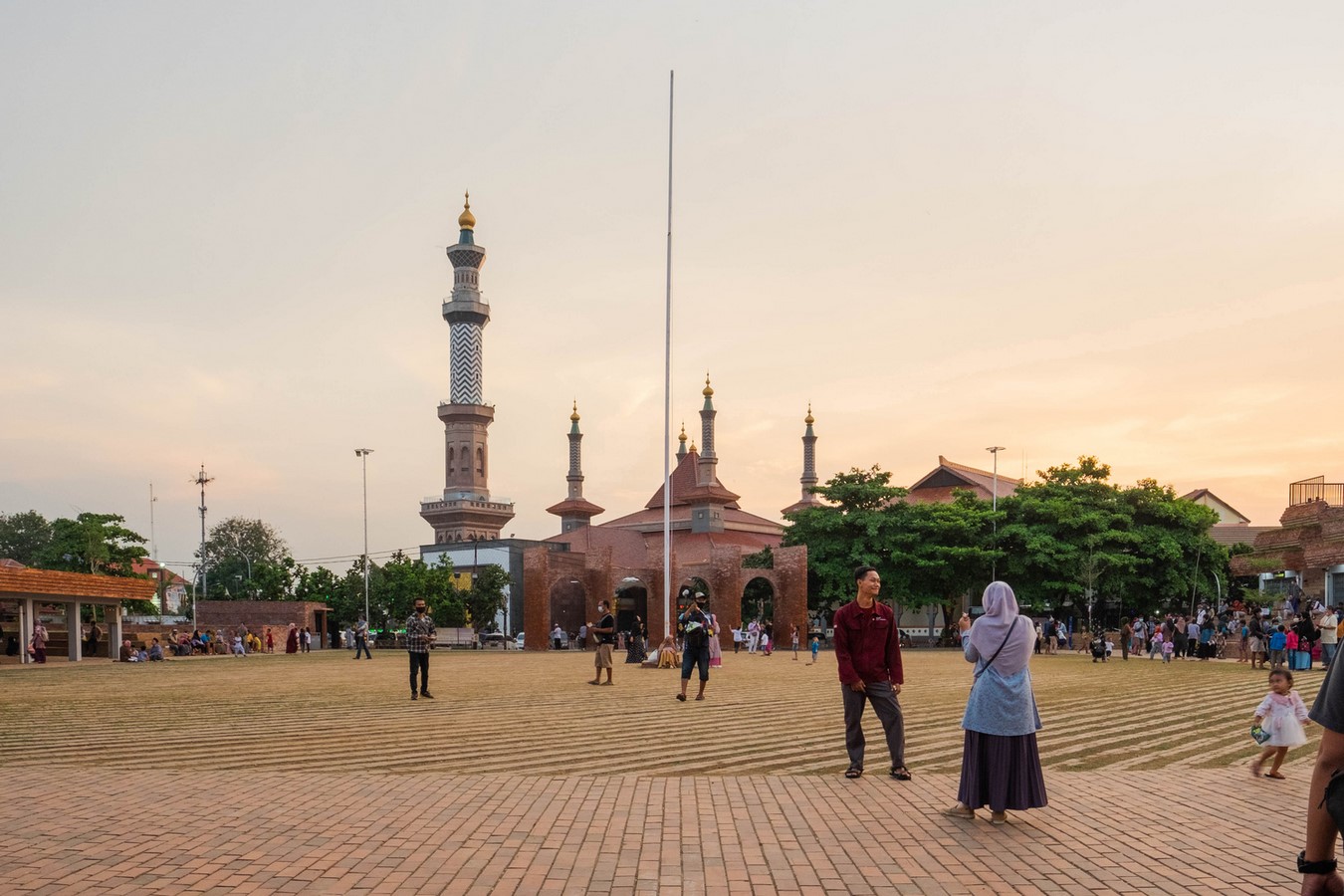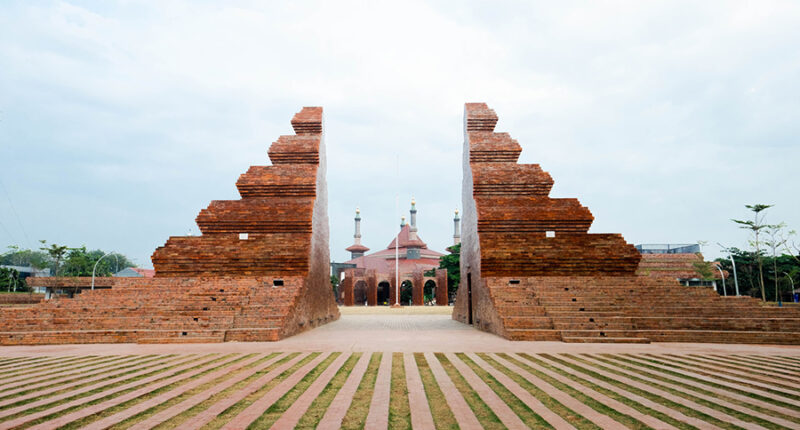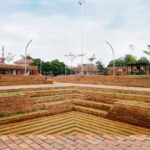SHAU Indonesia, renowned for its innovative architectural solutions, introduces the transformative Alun-alun Kejaksan Square, located in Kecamatan Kejaksan, Indonesia. This ambitious project, spanning an area of 12,000 square meters, redefines the urban landscape of Cirebon, West Java, offering a dynamic public space imbued with cultural significance and historical resonance.

Reimagining Urban Typologies
At the heart of Cirebon lies the Alun-alun Kejaksan Square, a vibrant 1-hectare gathering space adjacent to the iconic At-Taqwa Mosque. Rooted in Indonesia’s rich cultural heritage, Alun-alun represents a unique open-air plaza, serving as a focal point for community gatherings and cultural festivities. Despite its prime location, the site had remained underutilized until SHAU Indonesia’s visionary intervention.
A Collaborative Design Approach
Commissioned by the Governor of West Java, SHAU Indonesia collaborated with various stakeholders to realize the potential of Alun-alun Kejaksan Square fully. The design brief, shaped by input from the At-Taqwa mosque, municipality, historical preservationists, and local elders, aimed to create a multifunctional public space while honoring the city’s heritage and traditions.

Harmonizing Spiritual and Secular Spaces
Central to the design concept is the integration of spiritual and secular elements, symbolized by the installation of iconic gates marking the entrances from the city and the mosque. These gates, representing a dialogue between worldly and spiritual realms, frame the square, fostering an inclusive environment for communal interaction and contemplation.
Multifunctional Amenities
Alun-alun Kejaksan Square features a range of amenities catering to diverse community needs. A microlibrary, designed as a stepped platform, serves as a hub for literacy promotion and community engagement. Additionally, a playground area encourages active recreation, ensuring the square’s appeal to people of all ages.

Cultural Sensitivity in Design
SHAU Indonesia’s design ethos emphasizes cultural sensitivity and contextual relevance. Drawing inspiration from local architectural traditions, such as stepped gateways and raw brick pedestals, the square’s materiality and geometry pay homage to Cirebon’s historical landmarks. By incorporating familiar design elements in a contemporary context, SHAU fosters a sense of belonging and cultural pride among residents.
Sustainable and Inclusive Construction
By opting for locally sourced brick as the primary construction material, SHAU prioritizes sustainability and community empowerment. The use of indigenous materials not only reduces environmental impact but also stimulates the local economy and fosters community involvement in the construction process.
In essence, Alun-alun Kejaksan Square exemplifies SHAU Indonesia’s commitment to urban revitalization and cultural preservation. By reimagining traditional urban typologies and embracing community-centric design principles, SHAU has transformed Alun-alun into a vibrant cultural hub, enriching the social fabric of Cirebon and inspiring future generations.























